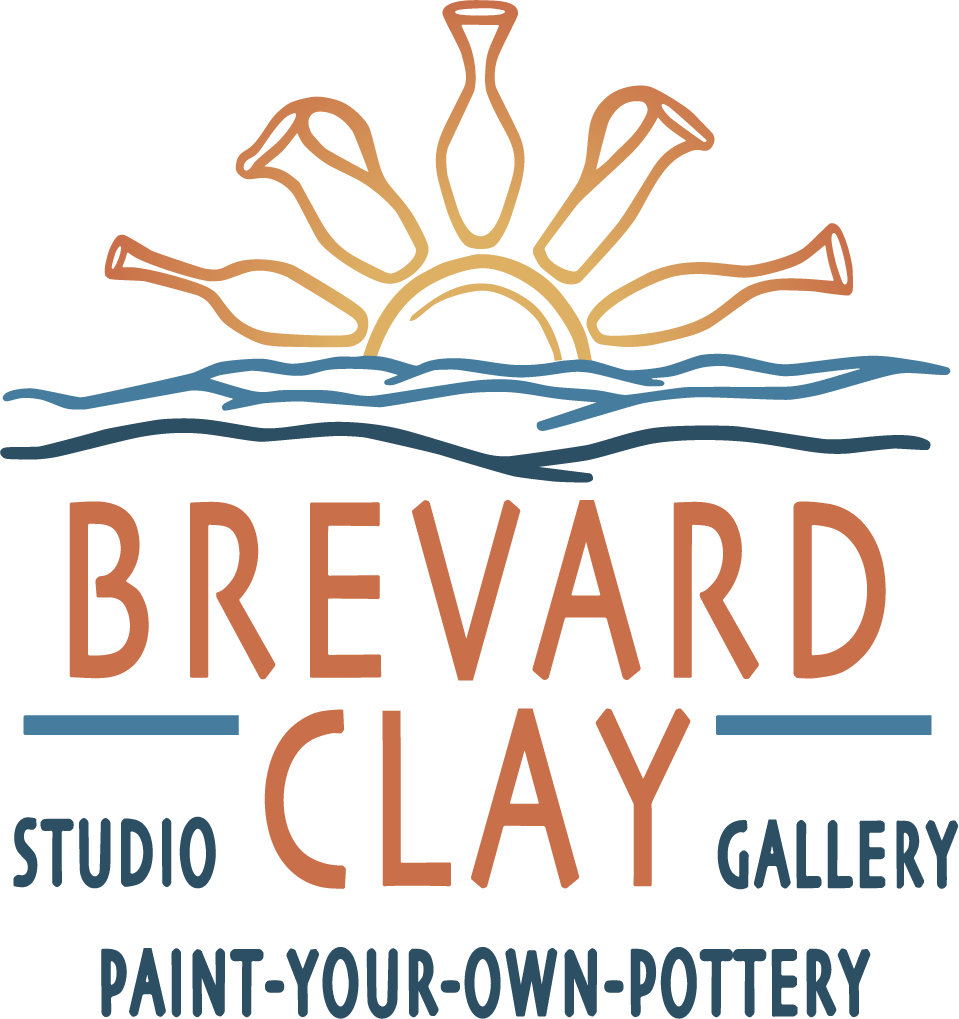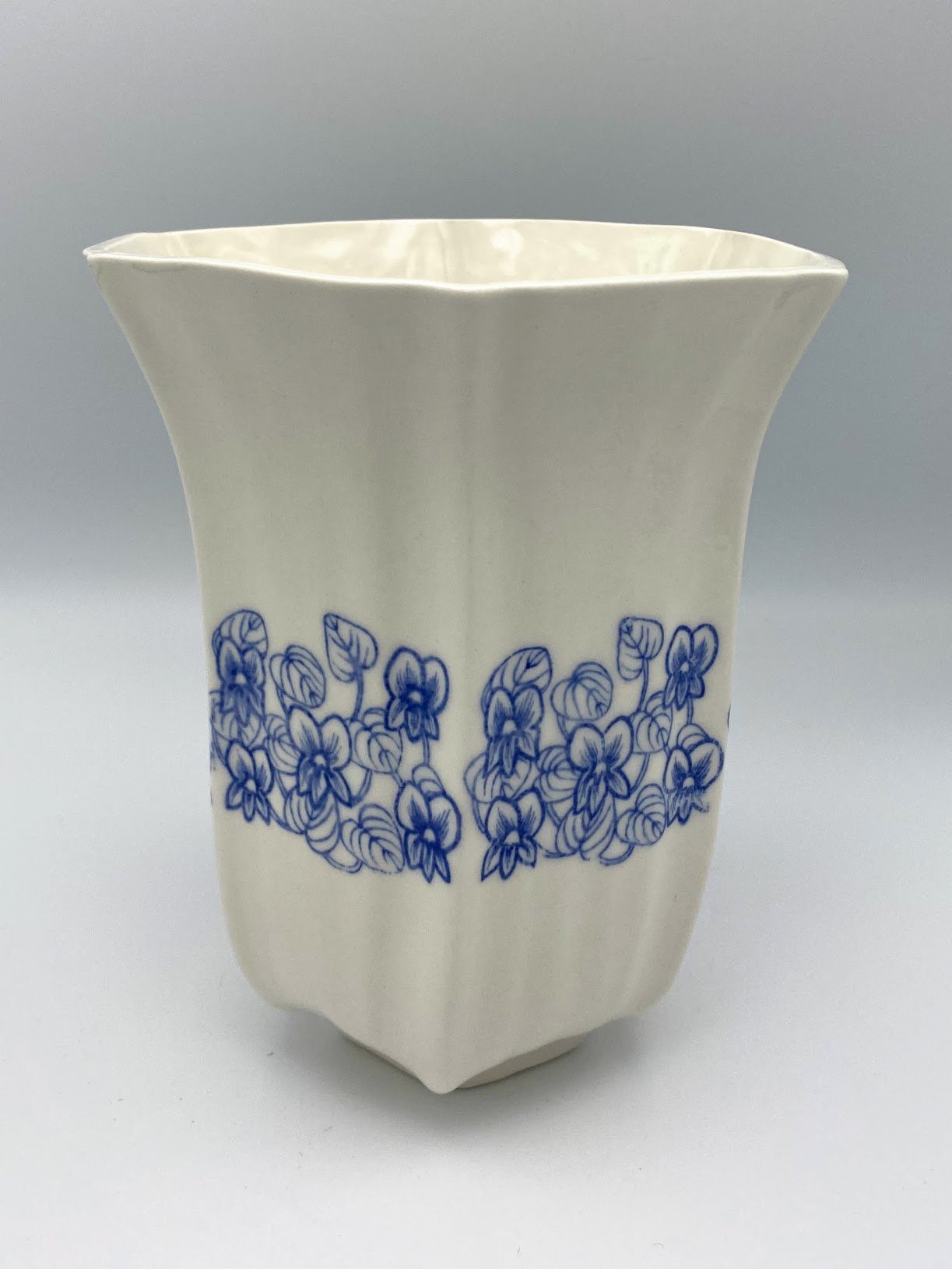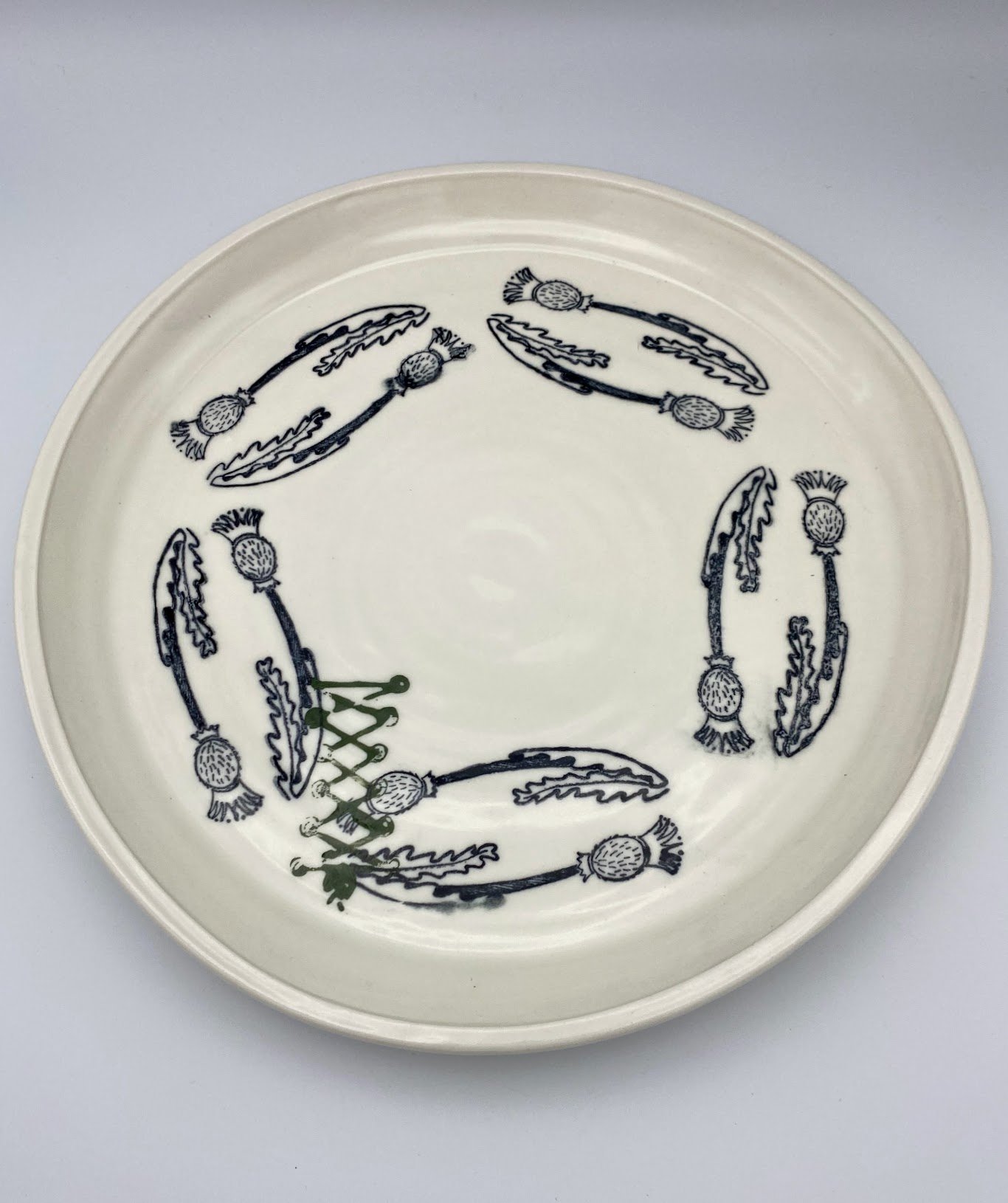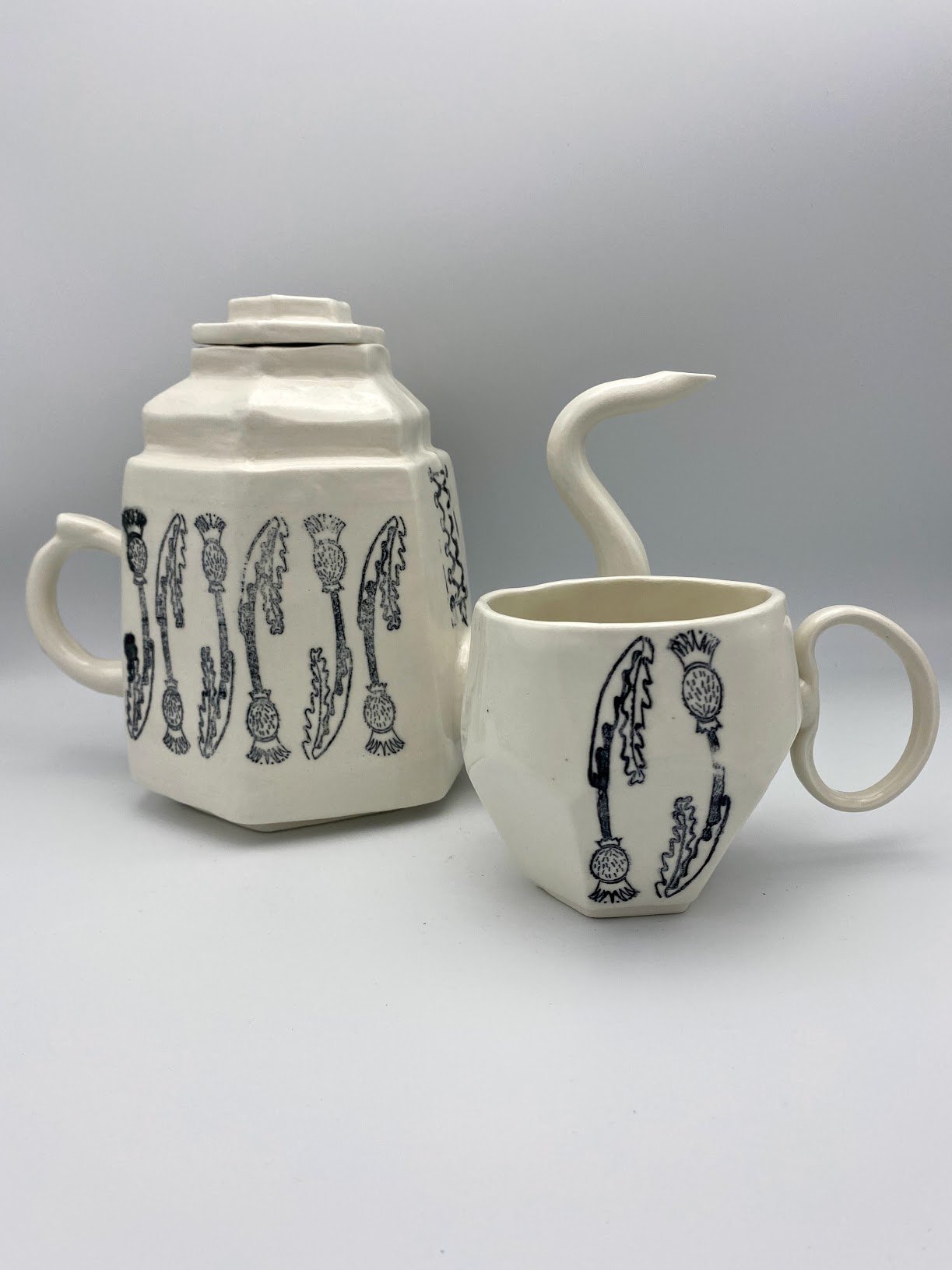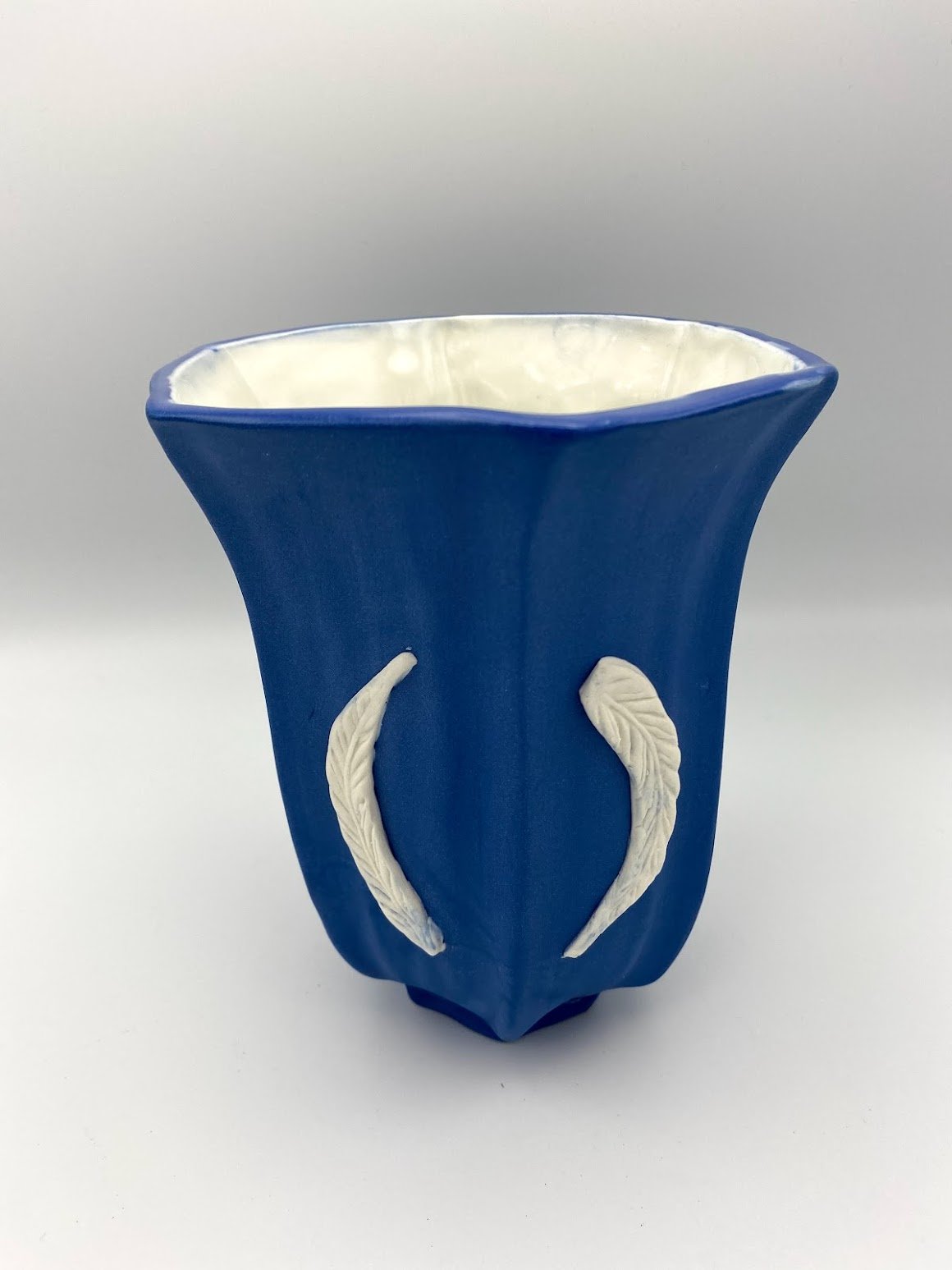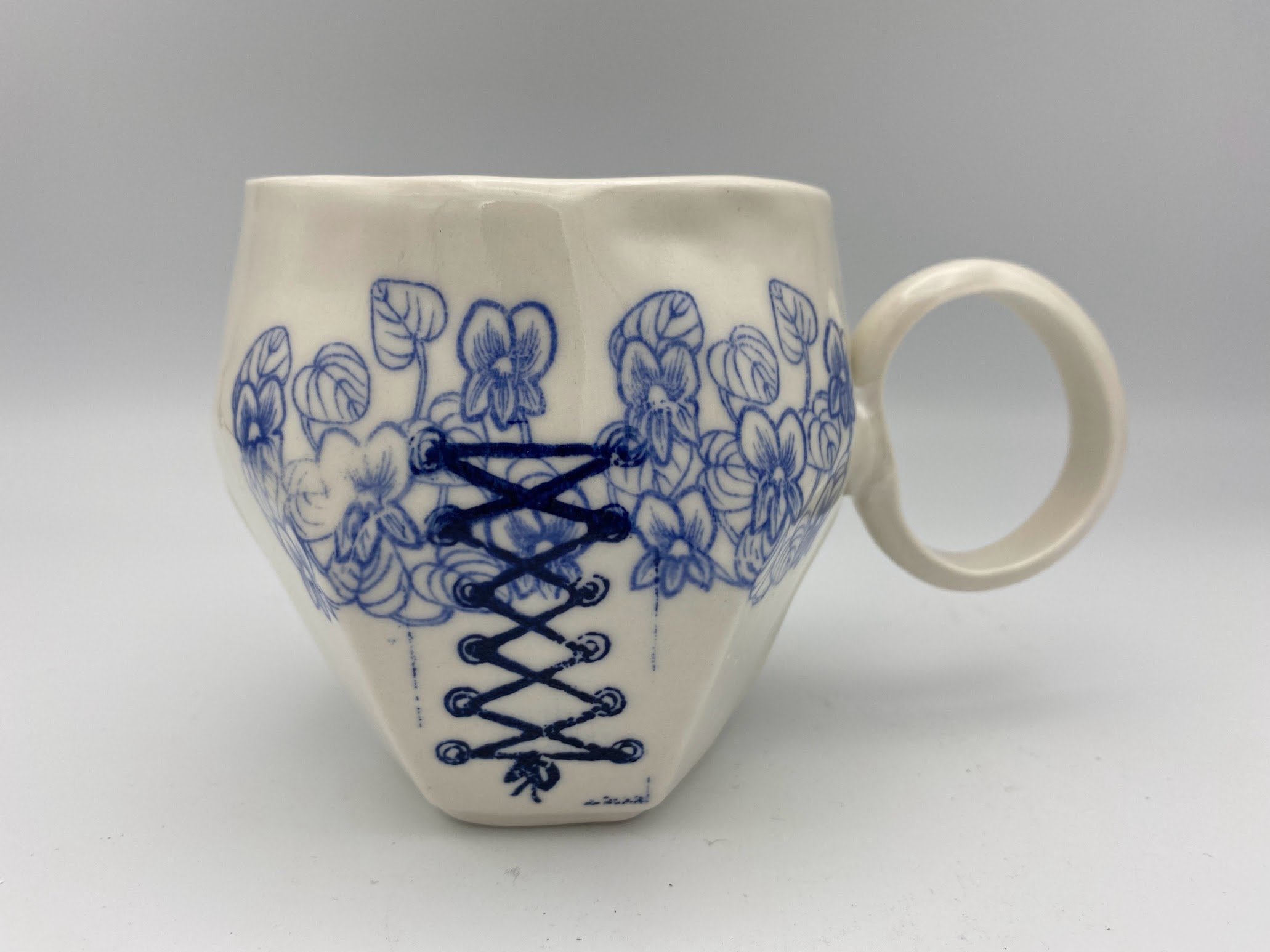Artist Overview
Morgan was born and raised in Spartanburg, South Carolina. Some of her fondest memories are of learning how to sew and model clay from her grandmothers. She loved to help sew historical costume dresses for herself and her dolls. Learning these skills through the tradition of passing on teaching through the generations has carried through her life and inspired her work. She received an art degree with a ceramics concentration and a double minor in art history and business in 2019 from Anderson University in Anderson, SC. Morgan had the honor of receiving the 2019 Outstanding Art Major Ceramics Award her senior year. As a 2020 701 Center for Contemporary Art prize finalist, she had the honor of being the youngest artist to ever make it that far. Her first solo exhibition FemininiTEA in July of 2020 was a success despite the pandemic and she is preparing for her second solo exhibition to be held March-May 2022. She currently is producing work, exploring new styles, techniques and themes. She also is studying as an apprentice under Tori Motyl, the artist of Motyl Pottery. She works for Motyl part time as Online Retail Shop Manager and Studio Assistant. McCarver has studios in Asheville, NC and Spartanburg, SC. Her art can be found in various galleries around North and South Carolina.
About
My work is inspired by Early Victorian American women. Like the female mentors in my life, native wildflowers have always been near to me; I just have to seek them out. Women have historically been compared to delicate flowers; I reinterpret that symbolism by allowing the porcelain wildflower imagery to represent a woman’s inner strength. I apply my drawings as transfers similar to a seamstress overlaying patterns and designs on a dress form. The individual within the identical is found through surface design. Hexagons embody the human desire to control the organic. The hexagon verges on circular, but still upholds rigid angles. Similarly, the organic female silhouette adapts to cultural beauty standards through rigid stays and corsetry. My experiences with scoliosis corrective back bracing and surgery allow me to empathize with my corset-wearing ancestors. Metal rods and boning are ingredients for both corsetry and scoliosis surgery. My back brace was painful, but designed to correct my form. Surgery straightened my spine permanently with metal screws and rods. Similarly, the Victorian corsetry was designed to “perfect” the female body through constricting boning. My “S” curve needed to be straightened, while Victorian women used their corsets to enhance their curves. Inner strength has a different meaning for everyone. For me, it is learning from my female ancestors and mentors, relying on my Faith, and building from my own experiences.
